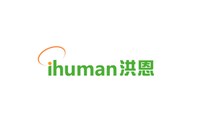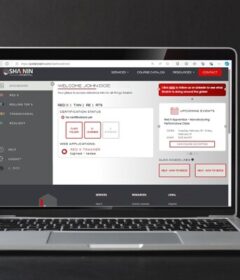Incorrect business listings deter 63% of consumers; Thursday’s daily brief

Plus, the Google News app will show non-AMP content and Microsoft Advertising announces optimization score in the Recommendations tab.
Good morning, Marketers, I spent last week in a cabin near the woods in New York.
The lack of distraction gave me time to think about some of the things that are holding me back, so I thought I’d share one with you: While on a hike, I found myself frustrated because we had been lost for some time. Apparently, that’s a given when you go hiking in a new area, but that wasn’t of much comfort to me. I couldn’t shake the need for progress, even though “progress” wasn’t the point of the hike.
The next day, I wrote “permission to change” in my notepad (read: diary). It’s to remind me that the next decision doesn’t have to be related to the previous circumstance or emotion. I didn’t need to continue to be frustrated just because I was already frustrated. Likewise, the way you do your job, teach your kids, communicate with your partner and so on doesn’t have to be dictated by your history — especially the negative patterns that may pepper that history.
It’s a cliché to say you can change whenever you want. I think you have to give yourself that permission to change and tell yourself it’s okay to try something new, which can be scary and may require some vulnerability.
Now, back to all the search marketing news you need to get your day started.
George Nguyen,
Editor
Google News app will display non-AMP content and send readers to publisher pages
As part of the page experience update, Google News will be displaying both AMP and non-AMP web content, the company announced in an email to publishers. The platform will no longer render article text from RSS feeds in the Google News app; instead, it will send readers directly to publishers’ webpages.
Why we care. We’ve known for some time that the Top Stories carousel would be open to non-AMP content, but now we know the same will go for the Google News app. The AMP requirement for Google News may have been a barrier for some publishers, but now that it’s going by the wayside, those publishers may want to get their content onto the platform to attract more readers potentially.
And, as Google stated in the announcement, the Google News performance reports in Search Console are unaffected, and your ability to track and measure traffic from Google News remains unchanged.
SEO tools among those marketers replaced last year
In a year when digital engagement became paramount, can you believe some marketers ripped and replaced search marketing tools? It’s true. About 16% of respondents to this year’s MarTech Replacement Survey said they replaced SEO Tools in the past year. While that’s a smaller proportion than those that said they replaced their marketing automation tools (24%), it sat right in the middle in the range of tools replaced. Get the full report here and grab your free pass to next week’s MarTech, when we’ll talk more about the results in detail.
Microsoft Ads announces optimization score in Recommendations tab
Optimization Score is now available on the Recommendations tab in Microsoft Ads, according to the latest announcement from the company. The new scoring system helps improve advertisers’ account optimization status and potential, help advertisers spend their time more efficiently and to prioritize the optimization actions with higher impact, and track their optimization efforts over time.
To check Optimization Score in Microsoft Ads, visit the Recommendations page in Microsoft Advertising. “You’ll see a percentage score in blue (see below). Each category of recommendations is shown with an aggregated score uplift from the recommendations belonging to it, and each recommendation is indicated with a score uplift in an ellipse on the top right of the card with a value from 0.1% to 100%, representing its estimated impact on your account or campaign performance,” wrote Cui and Ventura. If you apply or dismiss a recommendation, your score will adjust accordingly.
63% of consumers say incorrect information on a business listing would stop them from choosing that business

A BrightLocal study of 1,141 US-based consumers found that, over the last 12 months, 76% of consumers said they have arrived at a business too early or too late because its opening hours were wrong online. An even greater proportion (77%) said that they found conflicting information on business information sites.
Why we care. Inaccurate business information has become alarmingly common since the pandemic began, and the newly established prevalence only adds to the frustration for customers. The study also found that 63% of consumers would be deterred from using a business if their listing contained inaccurate information. That’s a huge proportion of potential customers that your local business could be opening itself up to by simply maintaining accurate details across the platforms that audiences use to find them.
I’m not crying…someone must be cutting some Brand Onions…
Your “Brand Onion.” “The Brand Onion rarely passes the ‘Factory Floor Test’ — could you share it outside of the Marketing Ivory Tower without being laughed out of the room?” said Marketoonist creator Tom Fishburne, “The strongest business communication is just plain English.”
20% of Bing results offer direct answers. A Financial Times article (that was mainly about Google’s MUM) from a few weeks ago reads: “The ability to extract answers from text has already enabled Bing to offer direct answers to 20% of the queries it gets, according to Ribas.” Jordi Ribas is the CVP of search and AI at Microsoft Bing, and it sounds like he’s saying that Bing serves direct answers for 20% of all queries conducted on Bing. Tip of the hat to Glenn Gabe for bringing this to our attention.
Start is Microsoft’s answer to Apple News, Google News. Microsoft Start is the company’s new, personalized news portal. It’s available as both a website and mobile app. Readers can provide feedback on the personalization algorithm via a thumbs up/down or manually add/remove interests. It’s ad-supported and began rolling out on Tuesday. Now, the questions are: Will Microsoft be able to attract users? And, will it provide value for publishers?
Amazon’s “Just Walk Out” tech is coming to Whole Foods
Amazon is testing technology that enables shoppers to walk right out of some Amazon Go and Amazon Fresh stores in two Whole Foods locations: Washington DC and Sherman Oaks, California.
This is the first time a major grocery chain is implementing this type of solution. Although it’s a long way away from getting adopted in most convenience stores, this trial will likely provide some critical takeaways for local businesses.
For example, how will consumers react to the new workflow, which requires them to sign in with an app? Chances are it’ll go well for Whole Foods, which has a cashback app integrated with its parent company. But, other grocery store chains may not have a customer base that’s used to opening an app every time they walk in. Also, how will employee count be affected? Will employees need to be re-trained for other duties?
Amazon has licensed its “Just Walk Out” technology to third-party retailers. If the company can demonstrate that it improves the customer experience, it might compel local businesses to give it a try. Perhaps that will afford local business owners more time to provide better customer service or simply find other ways to improve their business.



